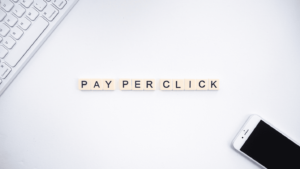Your target market is on social media, so why shouldn’t you be? It is better to meet them where they already are rather than try to bring them to a new location. Knowing how to best connect with your audience online is shaped by what kind of business you are: Business-to-Business (B2B) or Business-to-Consumer (B2C). Which area you operate in will influence which social media networks you should utilize to reach out to your target market. You know what platforms your audience is on, but what are they doing on those platforms? Are consumers sharing their latest adventures? What about their latest professional accomplishment? Each of these provides a touch-point opportunity for your brand to engage with your desired audience and create lasting relationships. Knowing which platforms will give your business the highest amount of exposure and impact is an important part of developing an effective social media campaign. Below, we discuss several widely known, impactful social media websites and a brief overview of each platform.
If you have questions, please feel free to give us a call.
Understanding the Top 5 Social Media Networks
To jump to a specific platform, click the icon!
 LinkedIn is a social media platform for the professional. It focuses on an employment and business-oriented approach to social media. A cornerstone of professional networking, LinkedIn is key for B2B (business-to-business) organizations and job seekers alike. The tone and ambiance of LinkedIn steers toward the professional side of its users. Thoughtful articles, statistical reports, and software recommendations are all common topics to see discussed within the networks of LinkedIn users. Additionally, many users feature their professional accomplishments, projects, and skills prominently as well as their licenses or certifications. By having the ability to have one’s resume on their profile, companies looking for employers get the chance to see a prospective employee’s skills, and vice versa. When businesses are active on LinkedIn and create company pages, those searching for a job can look into your business and see if it’s a good fit for them as well.
LinkedIn is a social media platform for the professional. It focuses on an employment and business-oriented approach to social media. A cornerstone of professional networking, LinkedIn is key for B2B (business-to-business) organizations and job seekers alike. The tone and ambiance of LinkedIn steers toward the professional side of its users. Thoughtful articles, statistical reports, and software recommendations are all common topics to see discussed within the networks of LinkedIn users. Additionally, many users feature their professional accomplishments, projects, and skills prominently as well as their licenses or certifications. By having the ability to have one’s resume on their profile, companies looking for employers get the chance to see a prospective employee’s skills, and vice versa. When businesses are active on LinkedIn and create company pages, those searching for a job can look into your business and see if it’s a good fit for them as well.
LinkedIn primarily services B2B businesses as a way to provide meaningful content to potential suppliers, sellers, employees, or partners. While some B2C practices do happen on LinkedIn, they are largely related to services aimed at furthering career goals and accomplishments. Businesses on LinkedIn utilize the platform to gain credibility amongst its peers, post job listings, and review resumes. Importantly, LinkedIn helps establish reputation for businesses from reliable, professional sources. If your target audience is the business professional, or aspiring business professional, LinkedIn is a network that will be key to your social media strategy.
 Facebook is the social media platform aimed at being more personal and conversational. On Facebook, one can connect their family and friends to give them a glimpse into their everyday life. Facebook focuses more on sharing experiences, opinions, and moments. However, it is also important for a business to be involved in platforms like Facebook because it provides the opportunity for your business to become a part of your consumers’ networks. This leads to a closer connection between consumer and business which establishes both a real relationship between parties and makes your business seem like more than just a business.
Facebook is the social media platform aimed at being more personal and conversational. On Facebook, one can connect their family and friends to give them a glimpse into their everyday life. Facebook focuses more on sharing experiences, opinions, and moments. However, it is also important for a business to be involved in platforms like Facebook because it provides the opportunity for your business to become a part of your consumers’ networks. This leads to a closer connection between consumer and business which establishes both a real relationship between parties and makes your business seem like more than just a business.
Largely focusing on B2C and B2B interactions, Facebook provides an area for consumers and businesses to interact directly. With systems in place like Facebook Display Ads, B2C businesses have many opportunities to get their products in front of the consumer. Additionally, companies are able to sell their products directly on Facebook leading to fewer clicks for potential consumers and increased ease of purchase. Facebook is a strong choice for social media marketing for businesses wishing to get their offerings in front of a wider audience of potential consumers.
 Instagram is a platform based largely around the sharing of images and video. The focus of Instagram is to share snapshots from everyday life in a way that the viewers feel like they are experiencing the pictures themselves. An important feature of Instagram is the ability for users to follow a specific hashtag (#), which allows them to see the latest information trending about that hashtag. Businesses can use this to ensure that their posts get exposure to their target audience by being in touch with the newest trends and providing relevant content. An interesting development that businesses can take advantage of is the utilization of Instagram “Influencers”, which are users with massive amounts of followers, to expand its reach. Partnering with an influencer or encouraging them to visit a business are two ways that a business could utilize an influencer’s following to reach audience members it may not have reached otherwise.
Instagram is a platform based largely around the sharing of images and video. The focus of Instagram is to share snapshots from everyday life in a way that the viewers feel like they are experiencing the pictures themselves. An important feature of Instagram is the ability for users to follow a specific hashtag (#), which allows them to see the latest information trending about that hashtag. Businesses can use this to ensure that their posts get exposure to their target audience by being in touch with the newest trends and providing relevant content. An interesting development that businesses can take advantage of is the utilization of Instagram “Influencers”, which are users with massive amounts of followers, to expand its reach. Partnering with an influencer or encouraging them to visit a business are two ways that a business could utilize an influencer’s following to reach audience members it may not have reached otherwise.
Similar to Facebook, Instagram appeals largely to businesses focused on B2C and B2B. Businesses are able to have pictures of its products placed directly in front of consumers who are interested in its brand, which is done by users “following” a business. Additionally, a brands can tag its images with pricing that links directly to its site which eases the consumer transition and makes their purchase decision simpler. Users can also interact with the brand on Instagram by posting their own images and tagging a brand which can lead to increased interaction and engagement between businesses and their consumer audience.
YouTube
 YouTube is a video sharing platform where any user can upload any type of content. Anything from gameplay to sports highlights or product reviews can be on YouTube. If a picture is worth a thousand words, then a video is worth millions. A video can show so much more of what a product or service is able to provide when compared to a static image or text. YouTube videos can be of any length and cover any number of topics, no matter the difficulty. For example, our VP of Sales and Marketing Ryan Kelly uses YouTube to explain a multitude of important SEO concepts on his channel: SEO on the Go! With the added bonus of descriptions and end-cards in the platform, YouTube can be utilized to become a strong asset for conversion.
YouTube is a video sharing platform where any user can upload any type of content. Anything from gameplay to sports highlights or product reviews can be on YouTube. If a picture is worth a thousand words, then a video is worth millions. A video can show so much more of what a product or service is able to provide when compared to a static image or text. YouTube videos can be of any length and cover any number of topics, no matter the difficulty. For example, our VP of Sales and Marketing Ryan Kelly uses YouTube to explain a multitude of important SEO concepts on his channel: SEO on the Go! With the added bonus of descriptions and end-cards in the platform, YouTube can be utilized to become a strong asset for conversion.
YouTube can be utilized in both B2B and B2C terms based on the focus of a business. By creating content that is relevant, informative, and useful a business can build a following on YouTube that can generate additional leads. Additionally, businesses can utilize ads that play before videos to reach its target audience on the content that they already watch.
 Twitter is a microblogging social media platform based largely on the posting of 280 characters (or less) messages called Tweets. Twitter promotes a spur of the moment type mentality and provides a channel through which messages can garner massive amounts of exposure by going “viral” either through being humorous, thoughtful, or any mixture of the two. Users are also encouraged to post multiple times a day and share updates, which further increases the relationship building between companies and their customers. This creates an environment in which businesses and their customers can be reach out to in near real-time which encourages open dialogue. This, in turn, can be used by businesses in many different ways from gathering customer feedback to generating new product ideas or public relations damage control. Proper utilization of this platform is a key part of developing a social media presence for B2C organizations as it can be especially relevant for customer service.
Twitter is a microblogging social media platform based largely on the posting of 280 characters (or less) messages called Tweets. Twitter promotes a spur of the moment type mentality and provides a channel through which messages can garner massive amounts of exposure by going “viral” either through being humorous, thoughtful, or any mixture of the two. Users are also encouraged to post multiple times a day and share updates, which further increases the relationship building between companies and their customers. This creates an environment in which businesses and their customers can be reach out to in near real-time which encourages open dialogue. This, in turn, can be used by businesses in many different ways from gathering customer feedback to generating new product ideas or public relations damage control. Proper utilization of this platform is a key part of developing a social media presence for B2C organizations as it can be especially relevant for customer service.
Twitter largely focuses on B2C businesses with a tremendous amount of direct interaction between brands and their customers. It can also work with B2B depending on your business’s industry. The largest draw of Twitter for businesses is that it’s incredibly easy to be involved in discussions surrounding your brand. An avenue for quick, casual conversation on Twitter also provides a way for businesses to get ahead of any potential emergencies or issues. As the saying goes, “an ounce of prevention is worth a pound of cure” and Twitter lets businesses be proactive and responsive when dealing with issues customers may have.
Find Out Which Platforms Best Suit Your Business
These are but a few of the numerous social media platforms that exist today. While social media is a broad category, one can tell that each platform does not necessarily serve the same purpose nor can each fulfill a goal to the same level. Knowing which platforms to be on and what tone to take on those respective platforms is a must have skill for any social media campaign.
WSI Smart Marketing is proud to offer Social Media Management. If you have additional questions about how social media can help grow your business or determining which platforms best fit your business. Feel free to contact us at (707) 843-3714 or through this form.
This blog is part of WSI’s Smart Marketing Guide to social media. [Click here] to view the complete guide.


